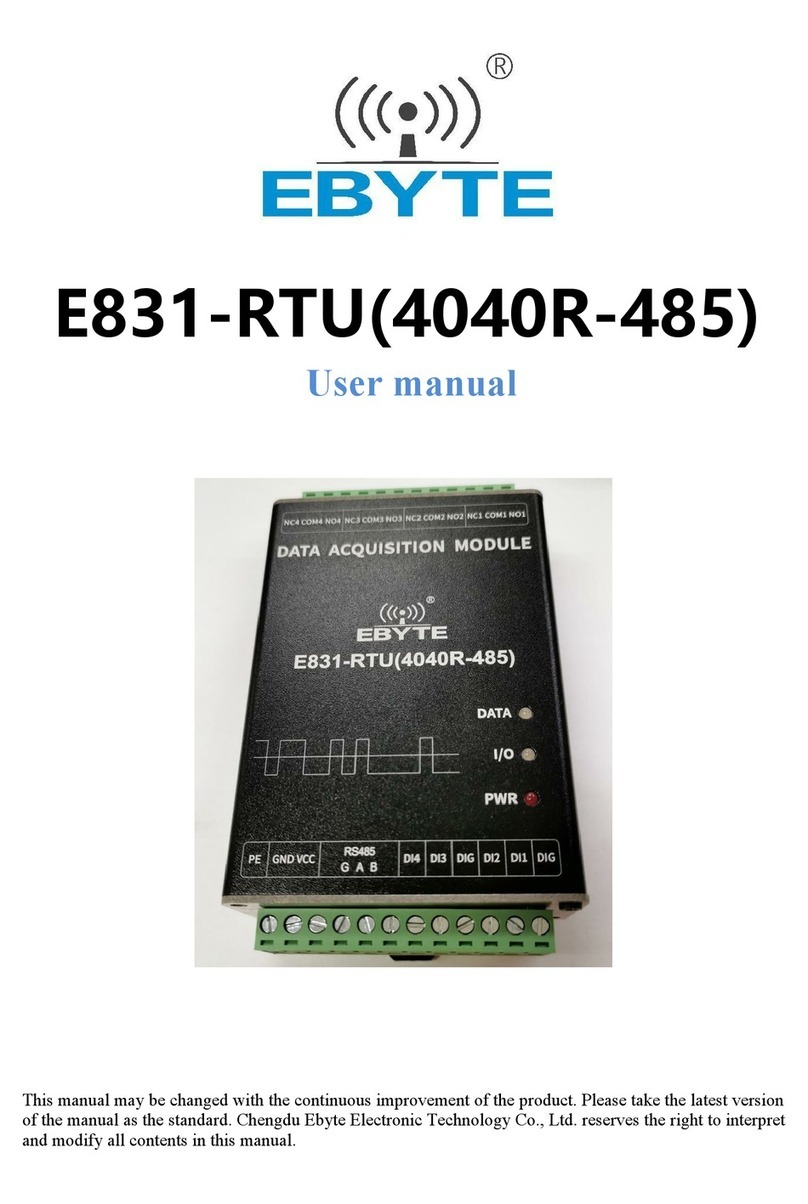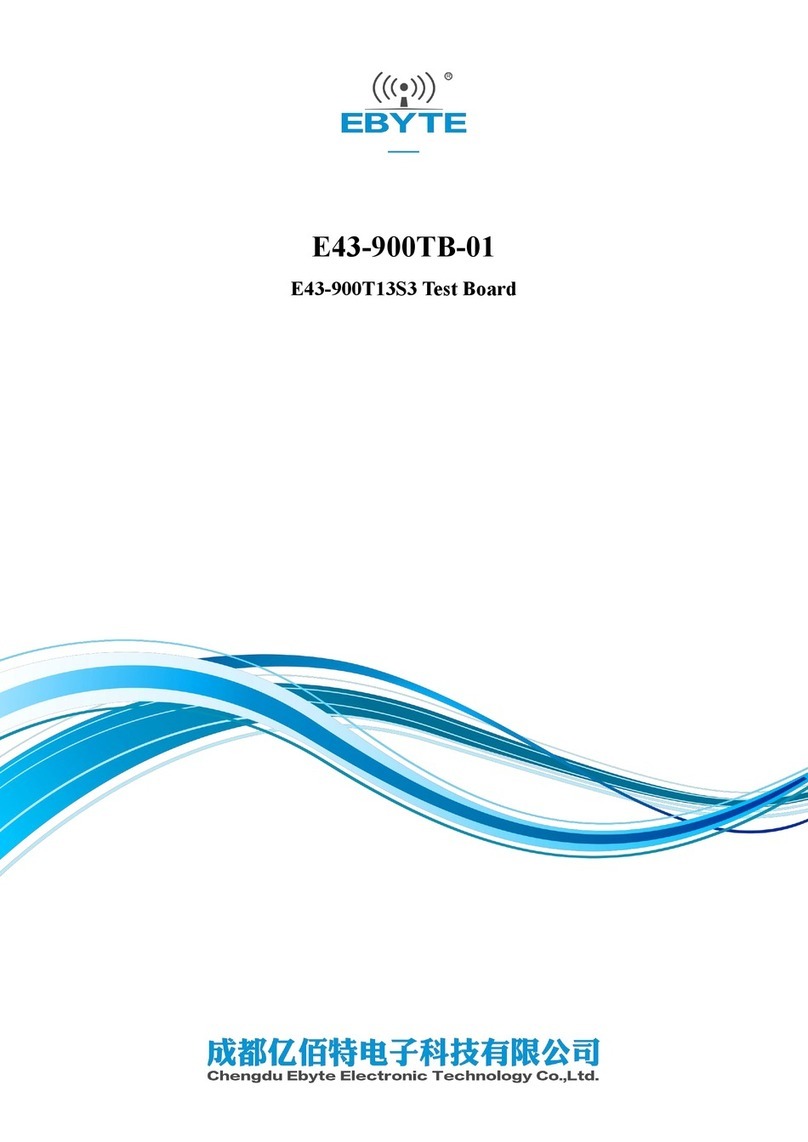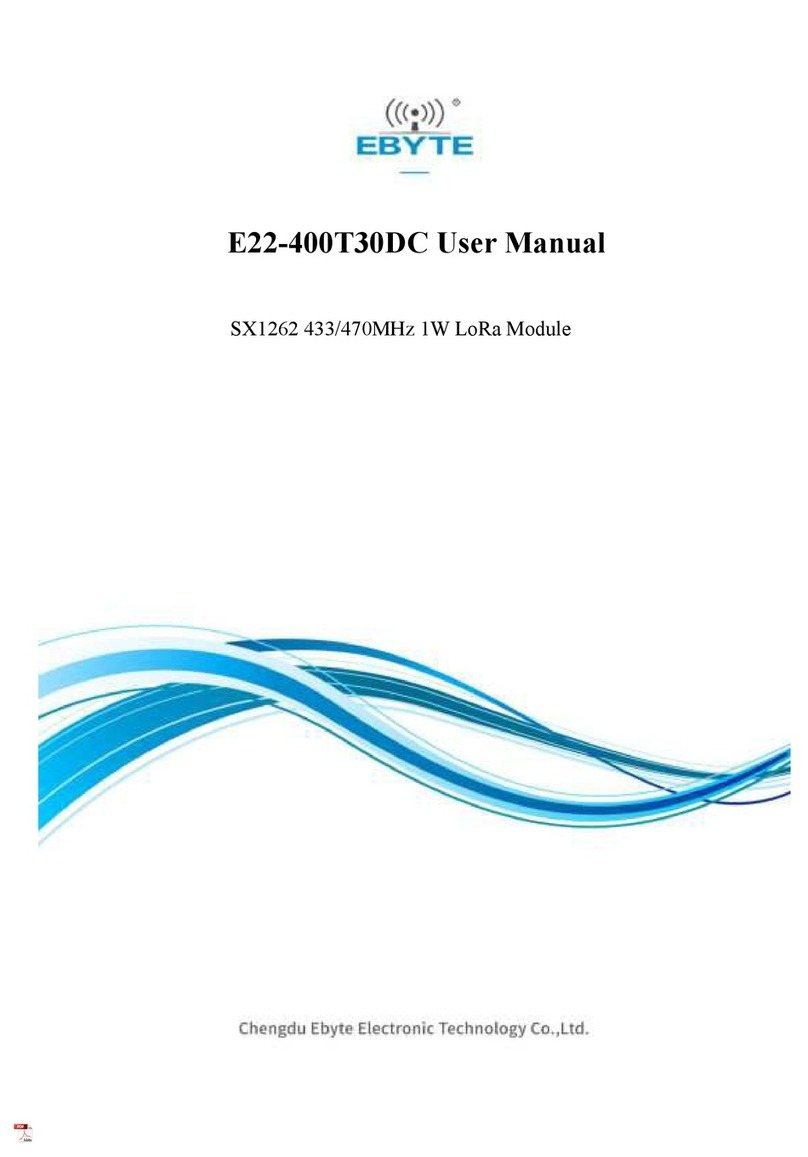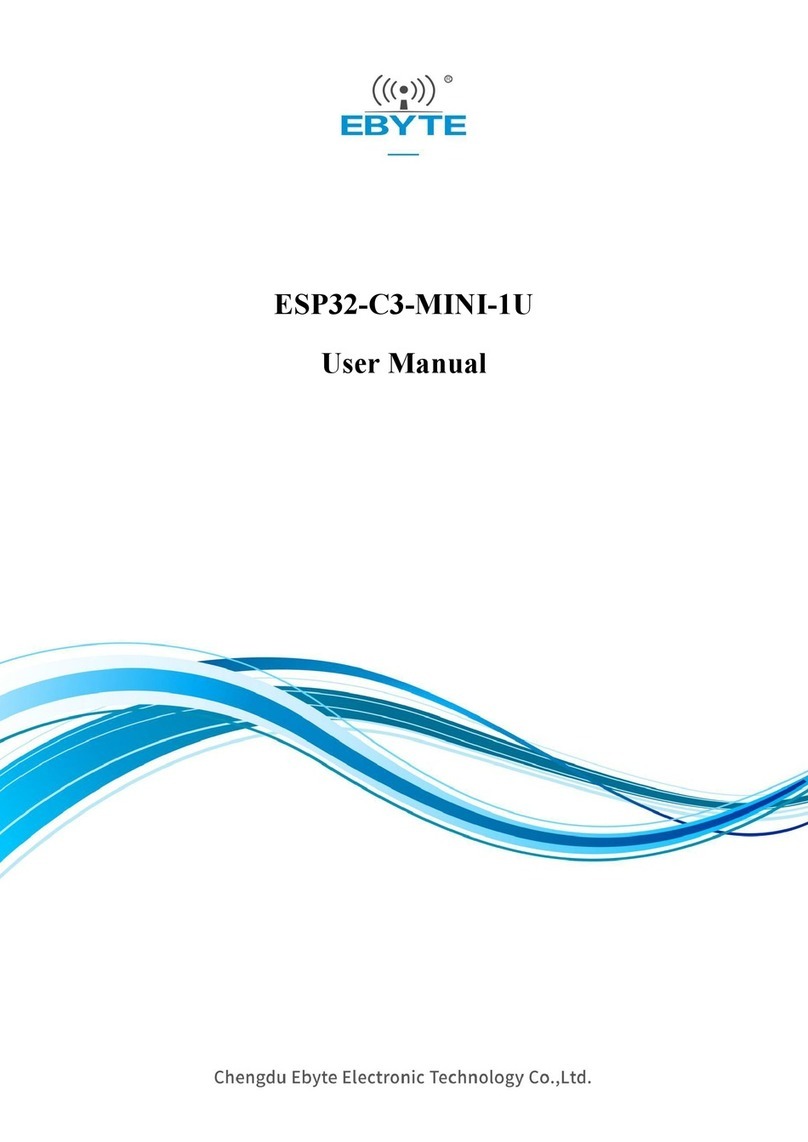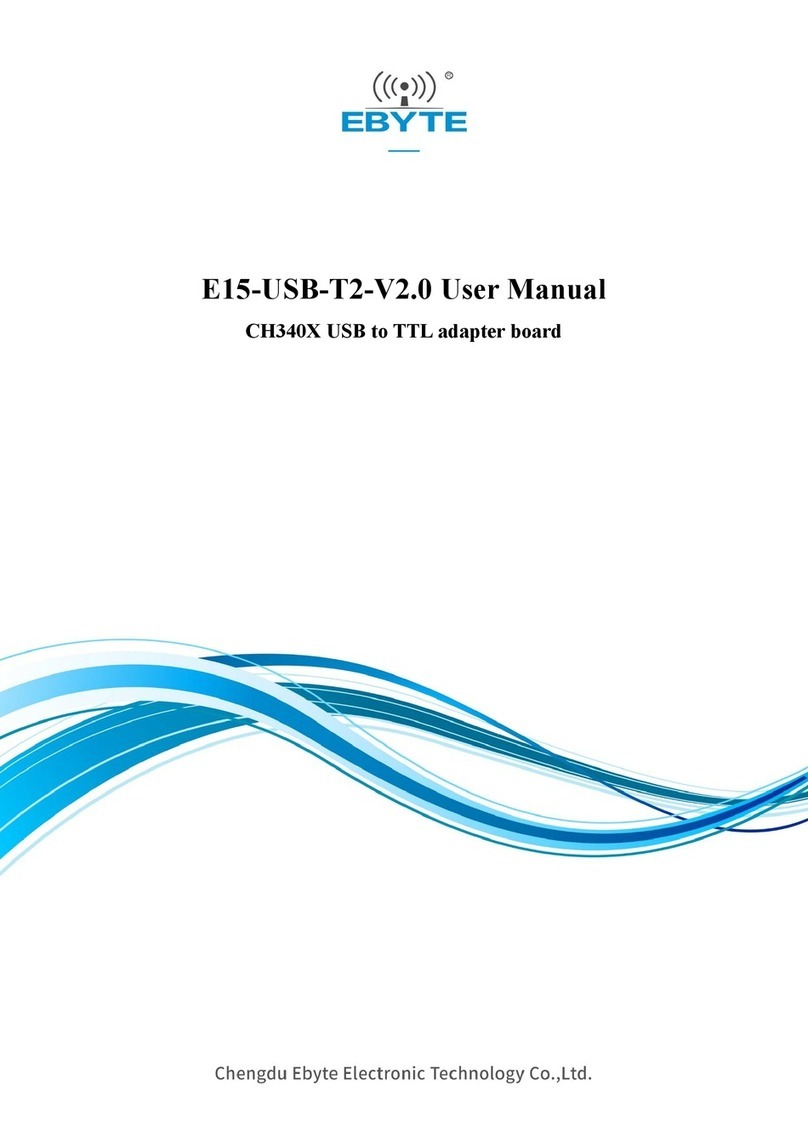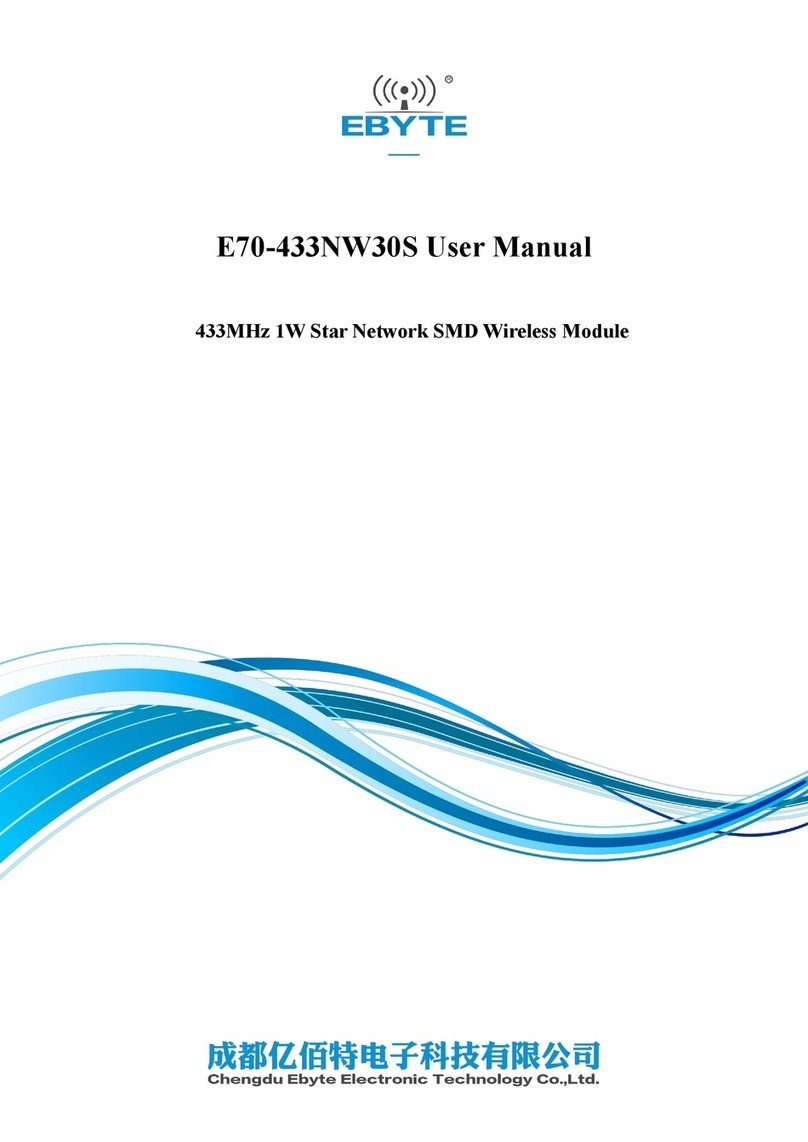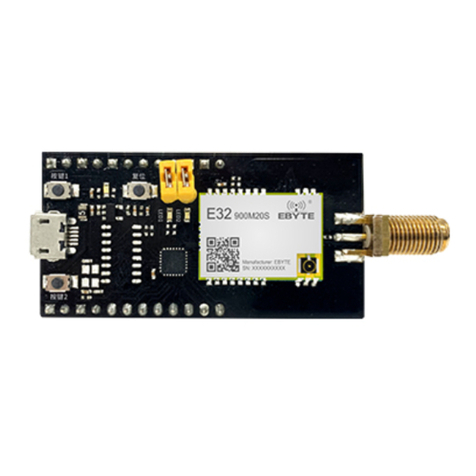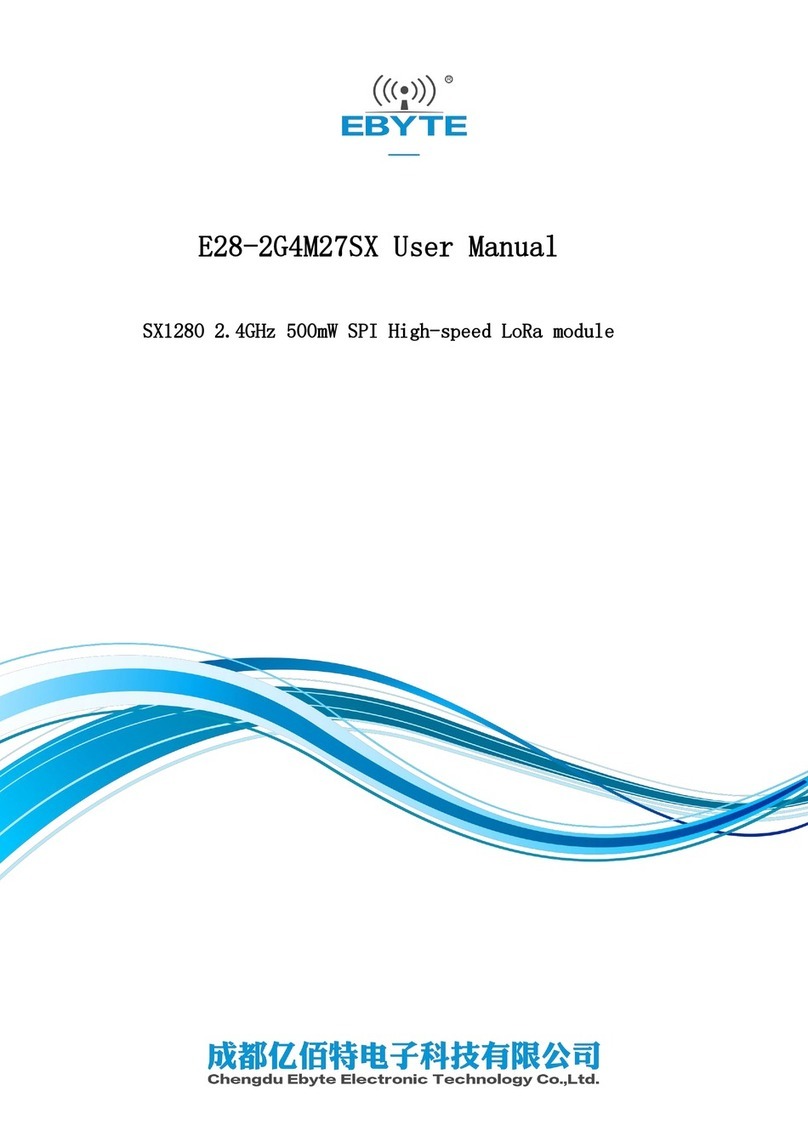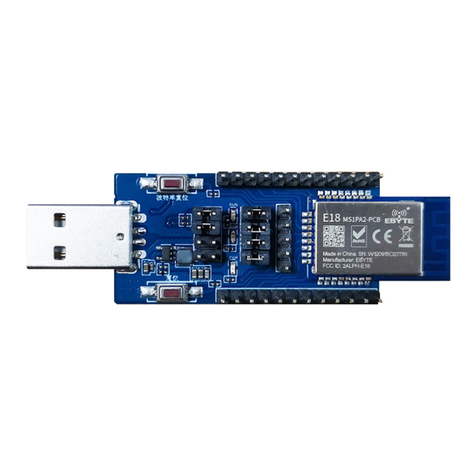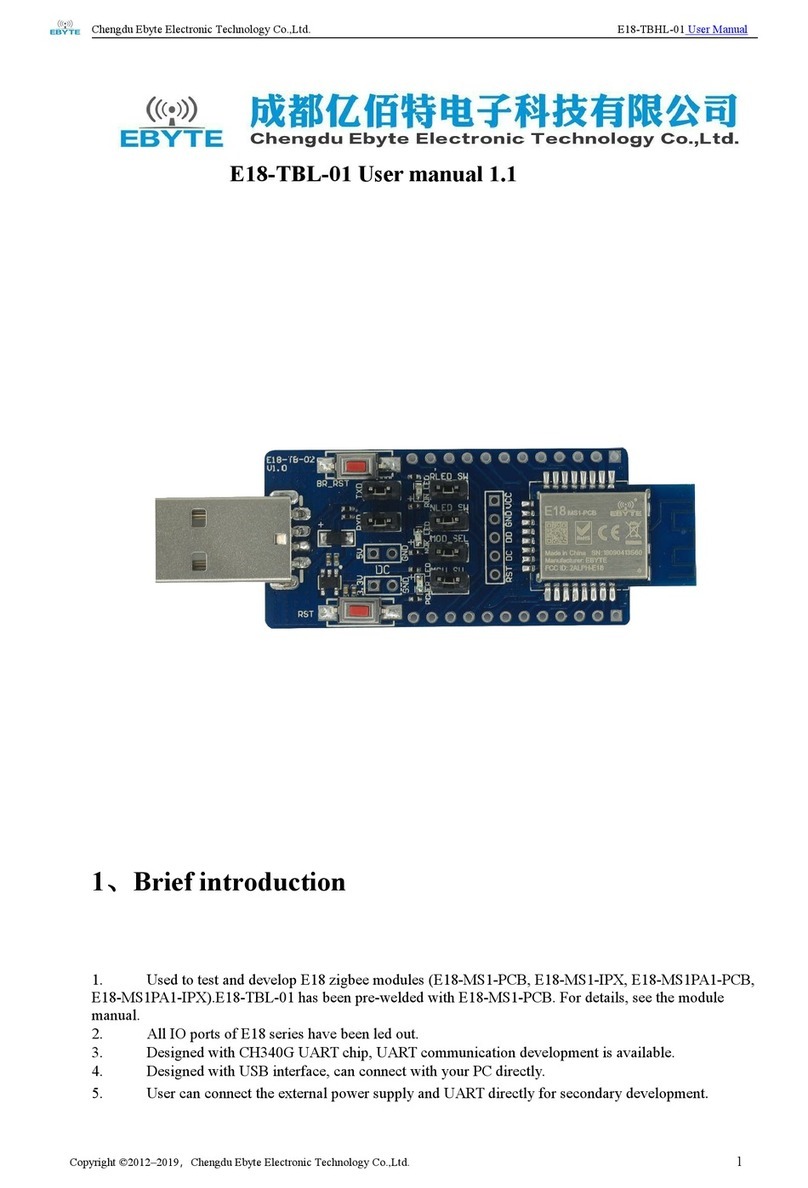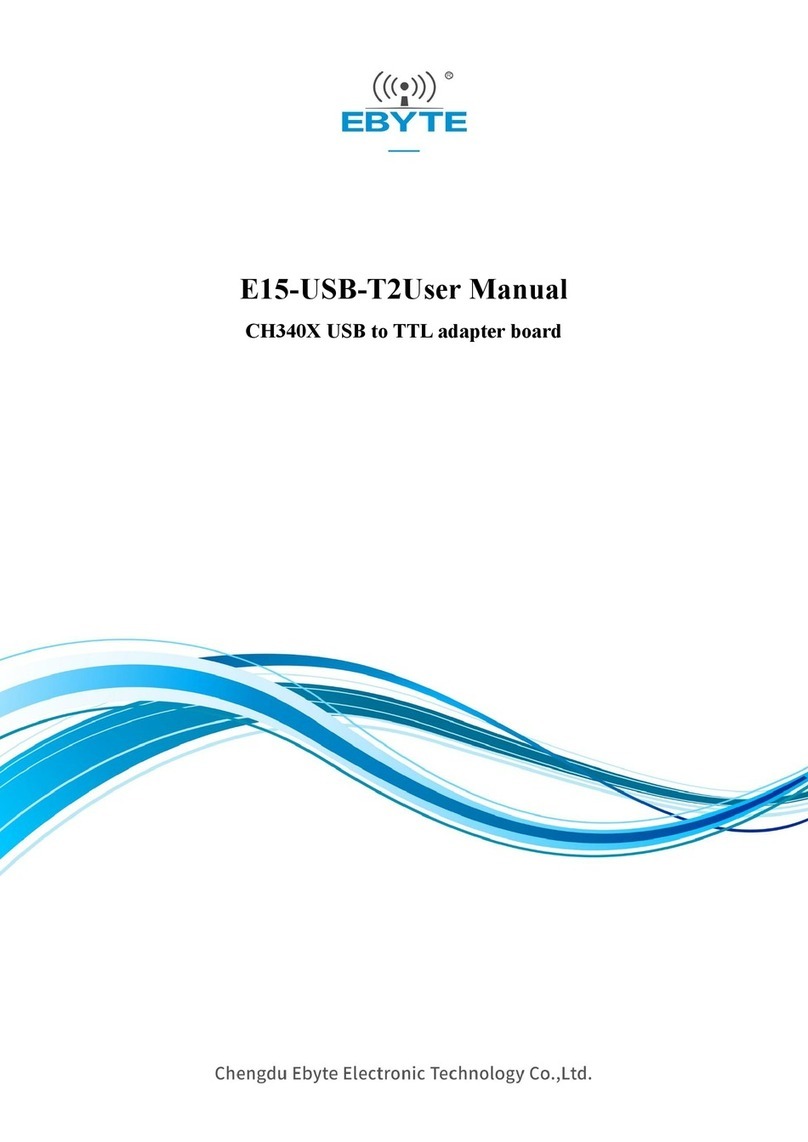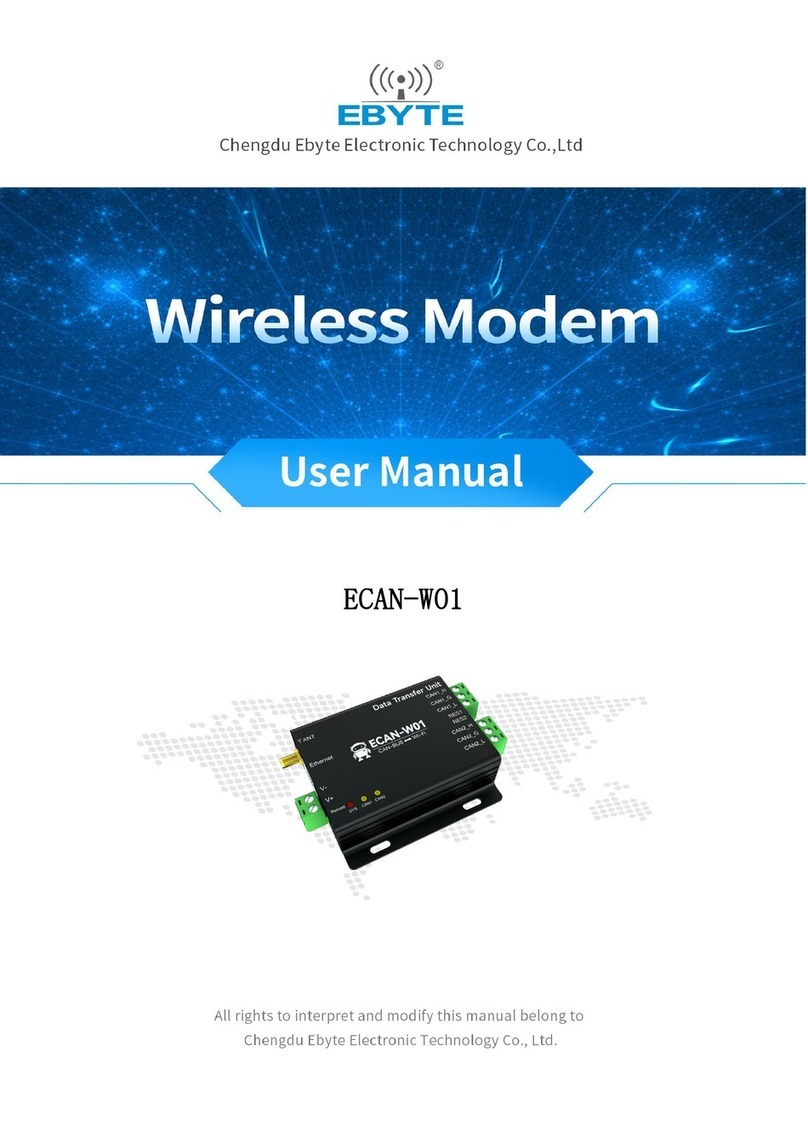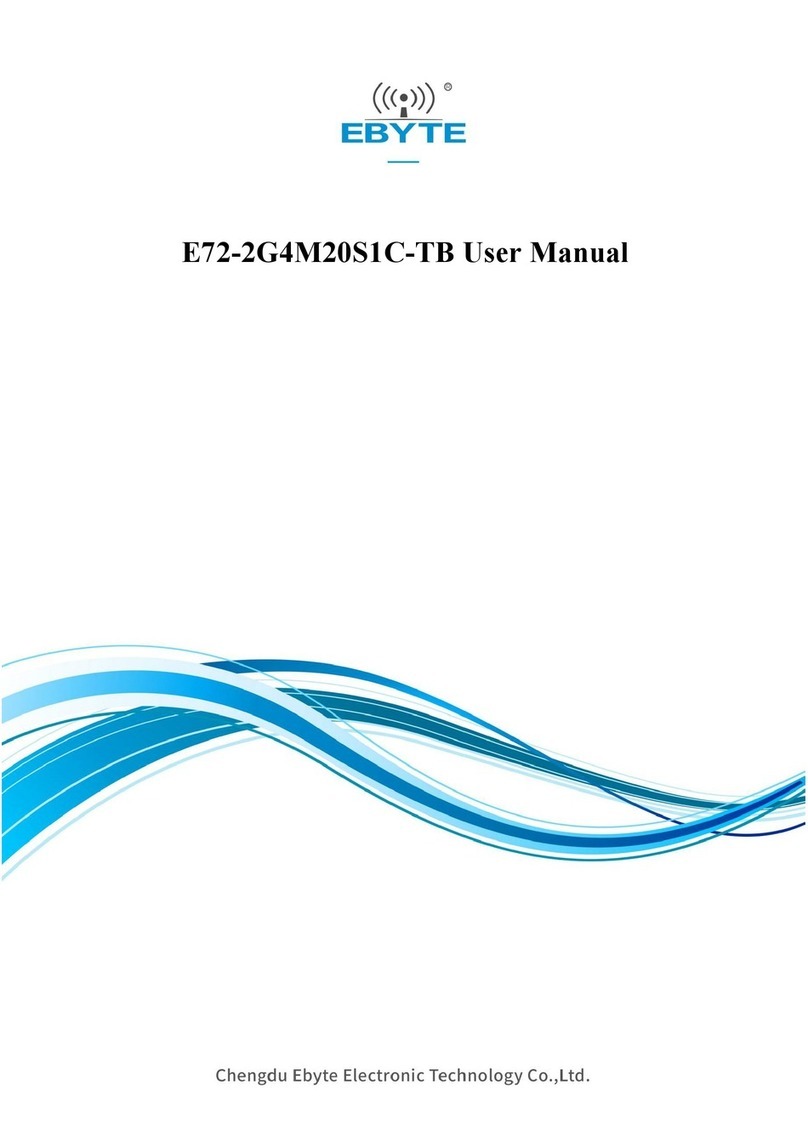
Chengdu Ebyte Electronic Technology Co.,Ltd. K62-DL20 User Manual
Copyright ©2012–2021,Chengdu Ebyte Electronic Technology Co.,Ltd. 3
3.4.1 Two -wire acquisition input (AI) connection .................................................................................... 26
3.4.2 Three-wire acquisition input (AI) connection ................................................................................... 27
3.4.3 wire acquisition input (AI) connection ..............................................................................................27
3.4.4 Analog restore output (AO) wiring ................................................................................................... 28
3.4.5 Analog impedance and other information ......................................................................................... 28
4 Configuration software driver installation, each function parameter reading, description and writing ..........29
4.1 Configuration software tools and driver installation ................................................................................ 29
4.1.1 Configuration software tools and driver installation package download .......................................... 29
4.1.2 Configuration software tools and driver installation ......................................................................... 29
4.1.3 Introduction to configuration software tool interface ........................................................................31
4.2 Reading and changing the basic parameters of the product..................................................................... 32
4.2.1 Product hardware connection and COM port selection .....................................................................32
4.2.2 Reading the basic parameters of the product .....................................................................................33
4.2.3 Serial port parameter change write and restore default ..................................................................... 34
4.3 I/O configuration parameter reading, description and writing ............................................................35
4.3.1 I/O configuration parameter reading ................................................................................................. 35
4.3.2 I/O configuration parameter description ............................................................................................36
4.3.3 I/O configuration parameter writing ..................................................................................................37
5 The second communication mode parameter reading, description and writing .............................................. 38
5.1 The second communication method: LoRa ..............................................................................................38
5.1.1 LoRa parameter reading.................................................................................................................... 38
5.1.2 LoRa parameter description...............................................................................................................39
5.1.3 LoRa parameter configuration write..................................................................................................39
5.1.4 LoRa configuration parameter range .................................................................................................40
6 ModBus ........................................................................................................................................................... 40
6.1 ModBus address table ......................................................................................................................... 40
6.1.1 Function code and register address table ...........................................................................................40
6.1.2 Change ModBus address................................................................................................................... 41
6.1.3 Read analog AI input .........................................................................................................................41
6.1.4 Read analog AO output ..................................................................................................................... 42
7 Precautions for use .......................................................................................................................................... 42
8 FAQ ................................................................................................................................................................. 43
